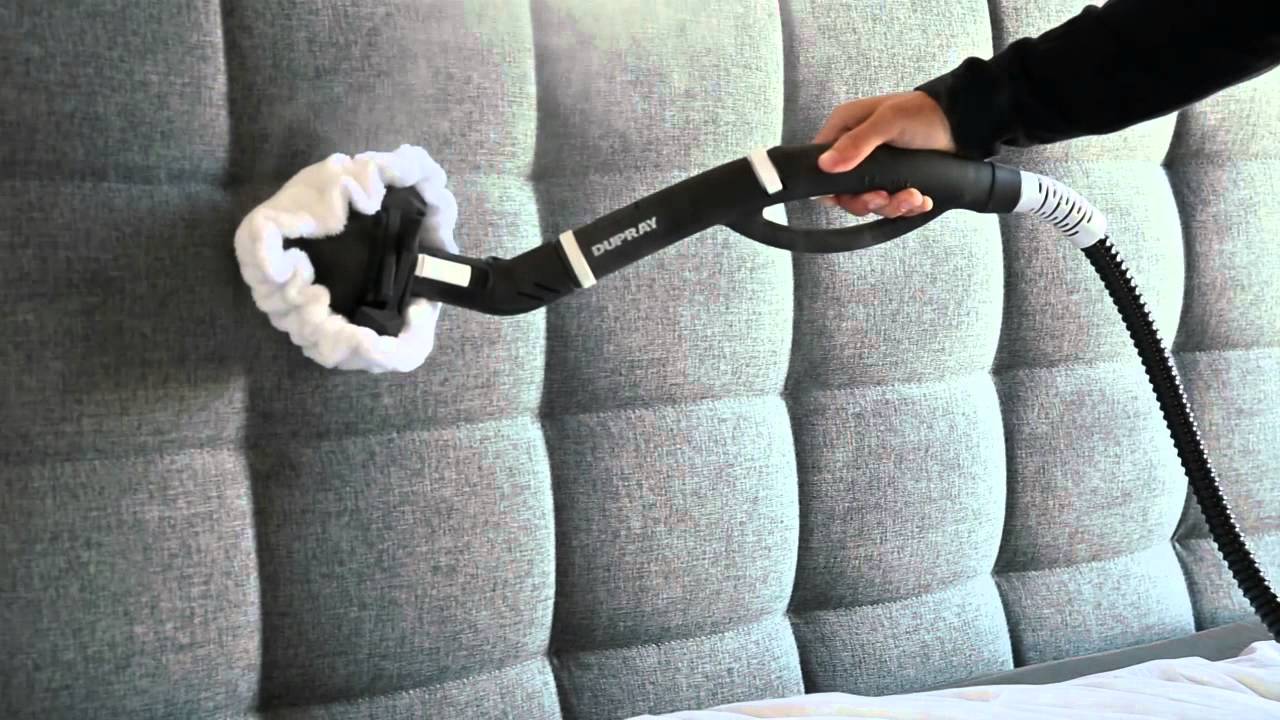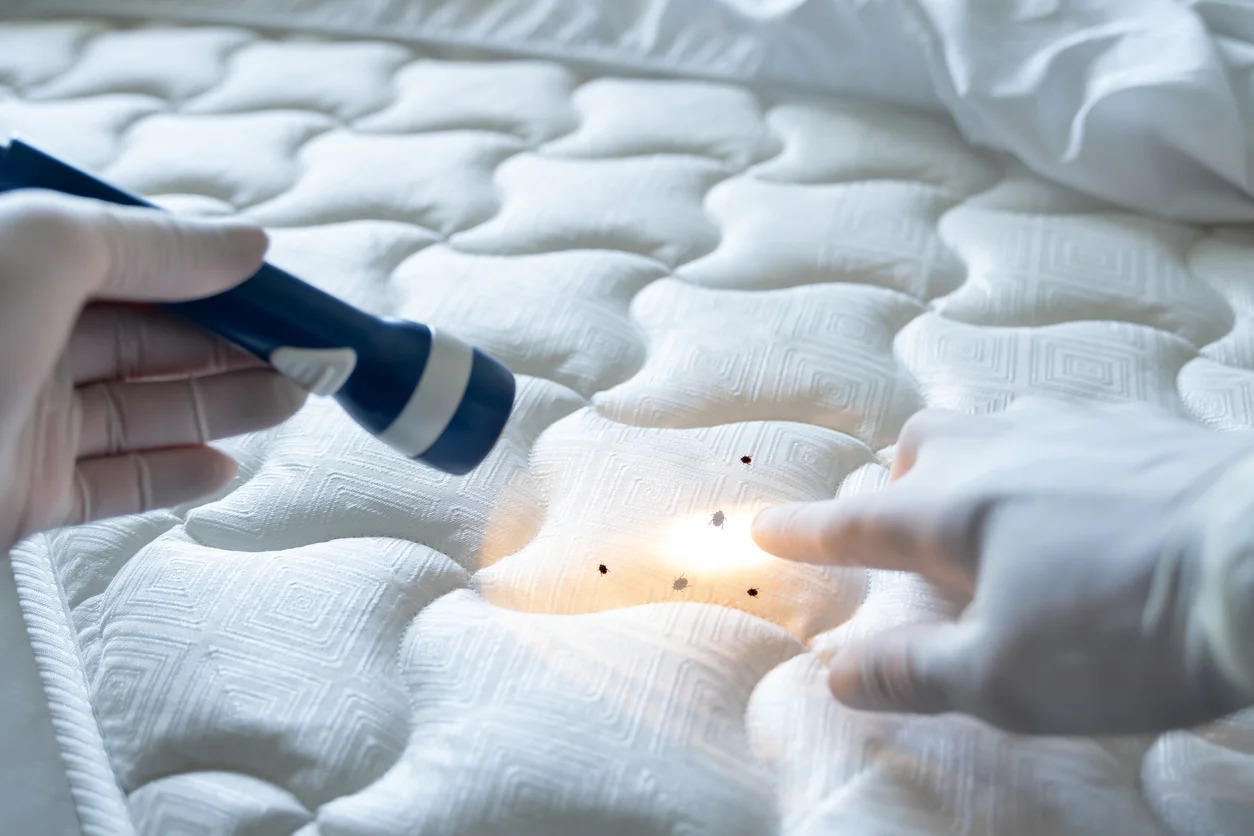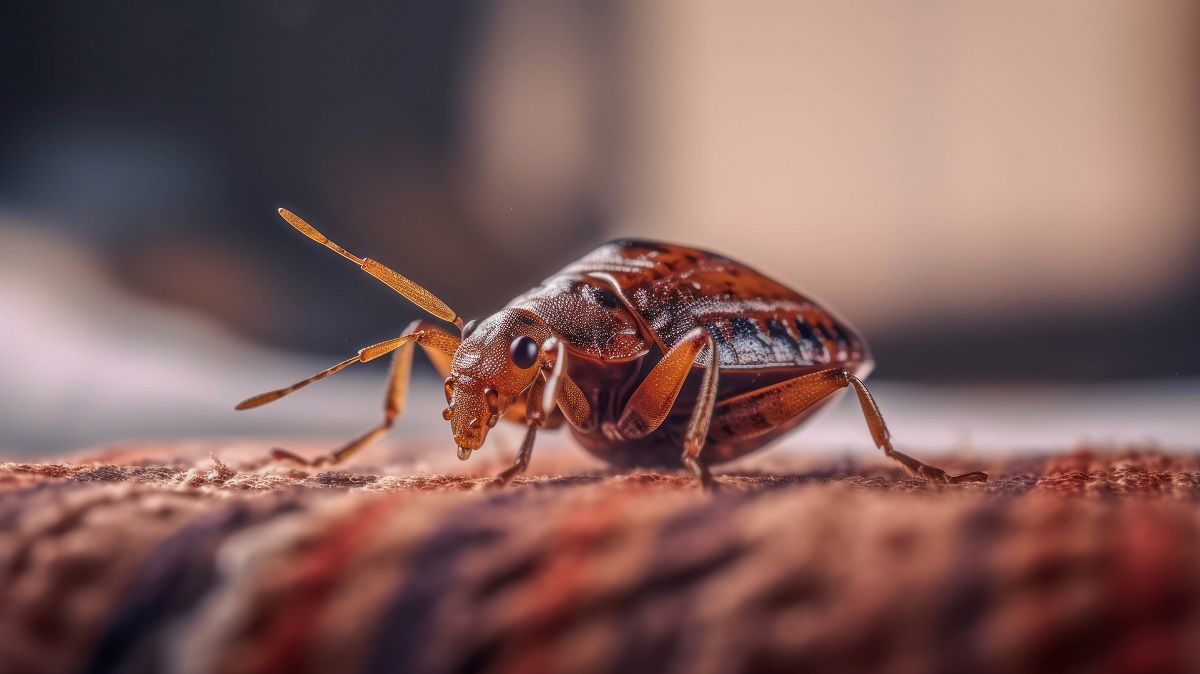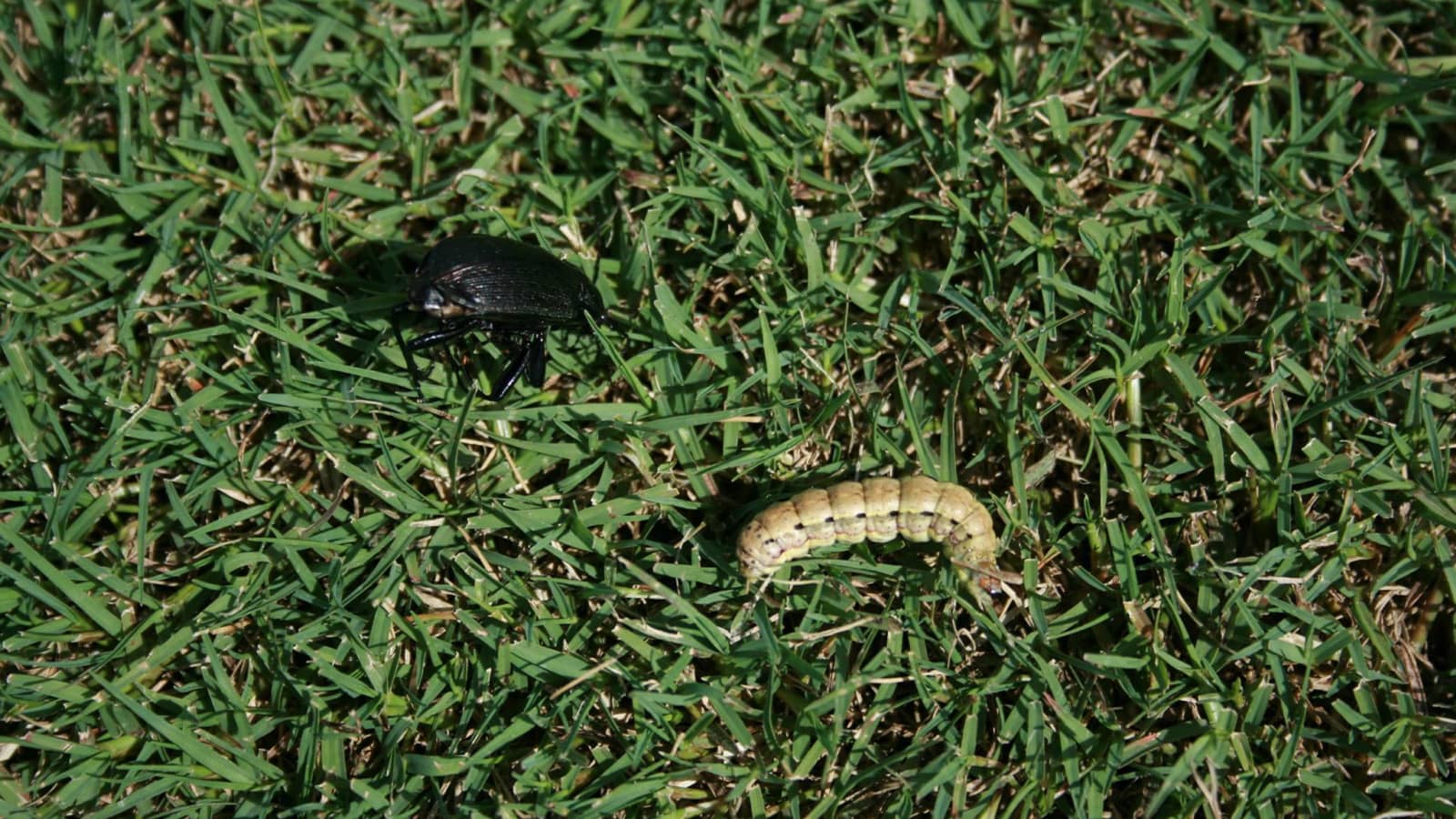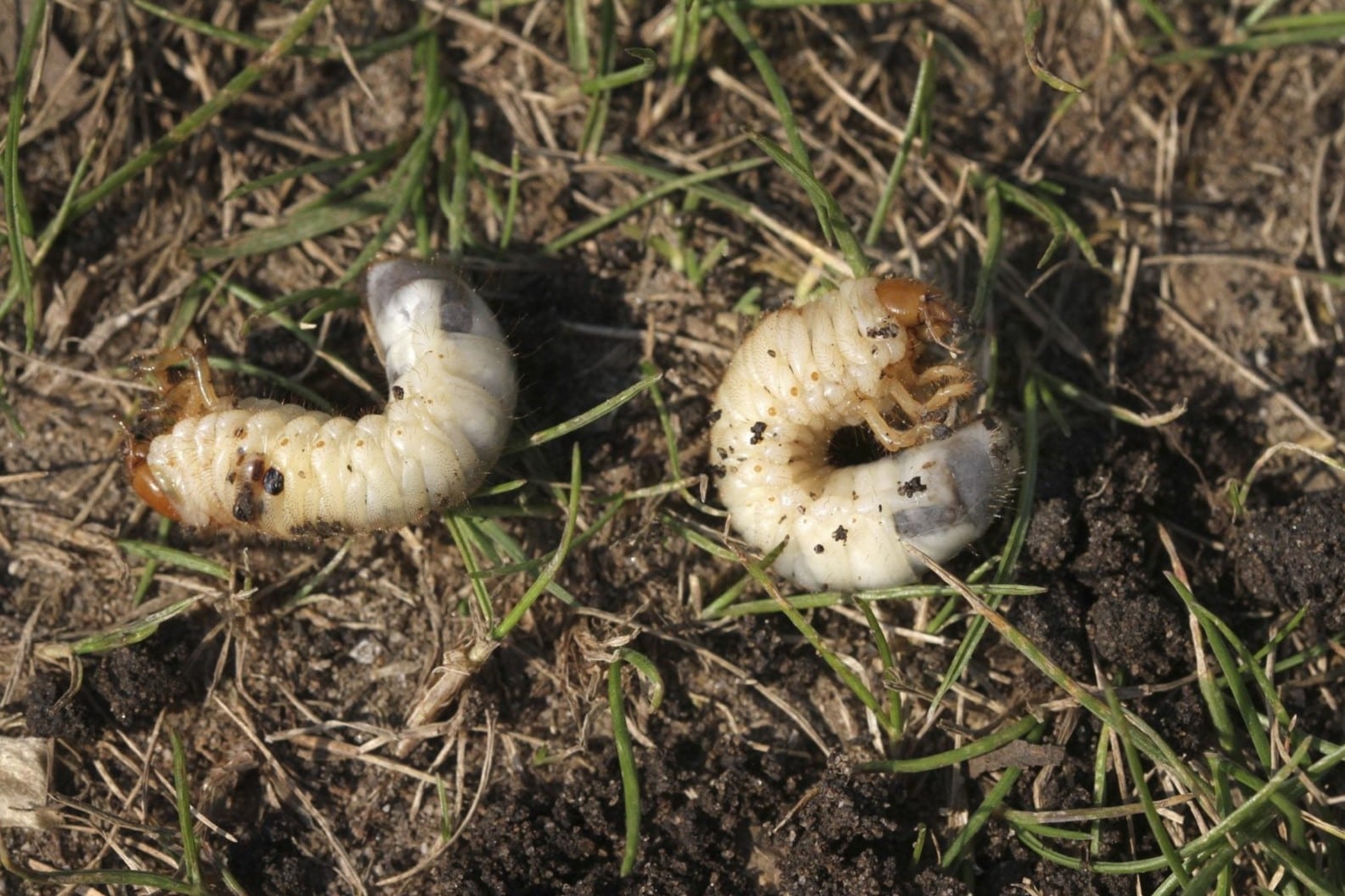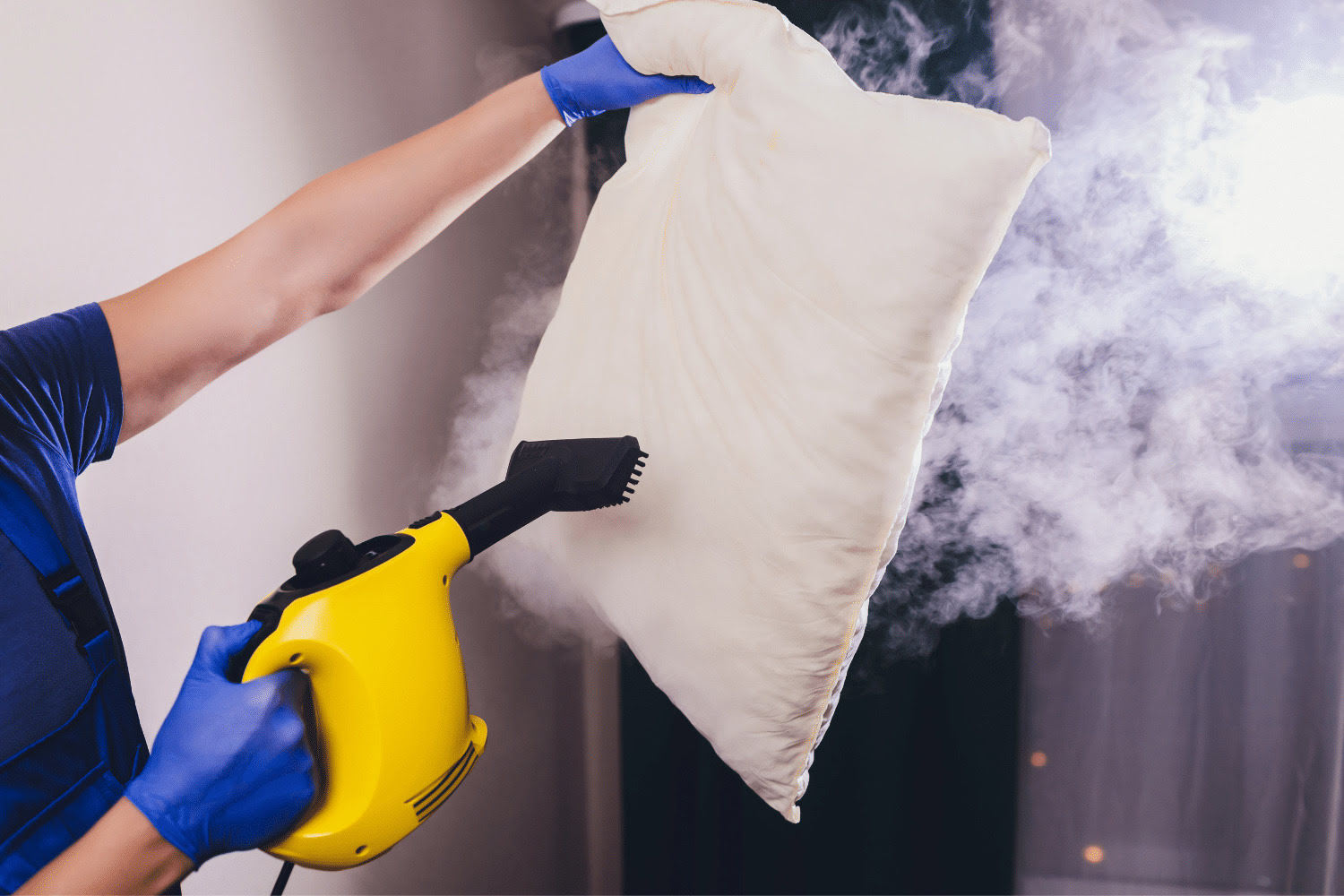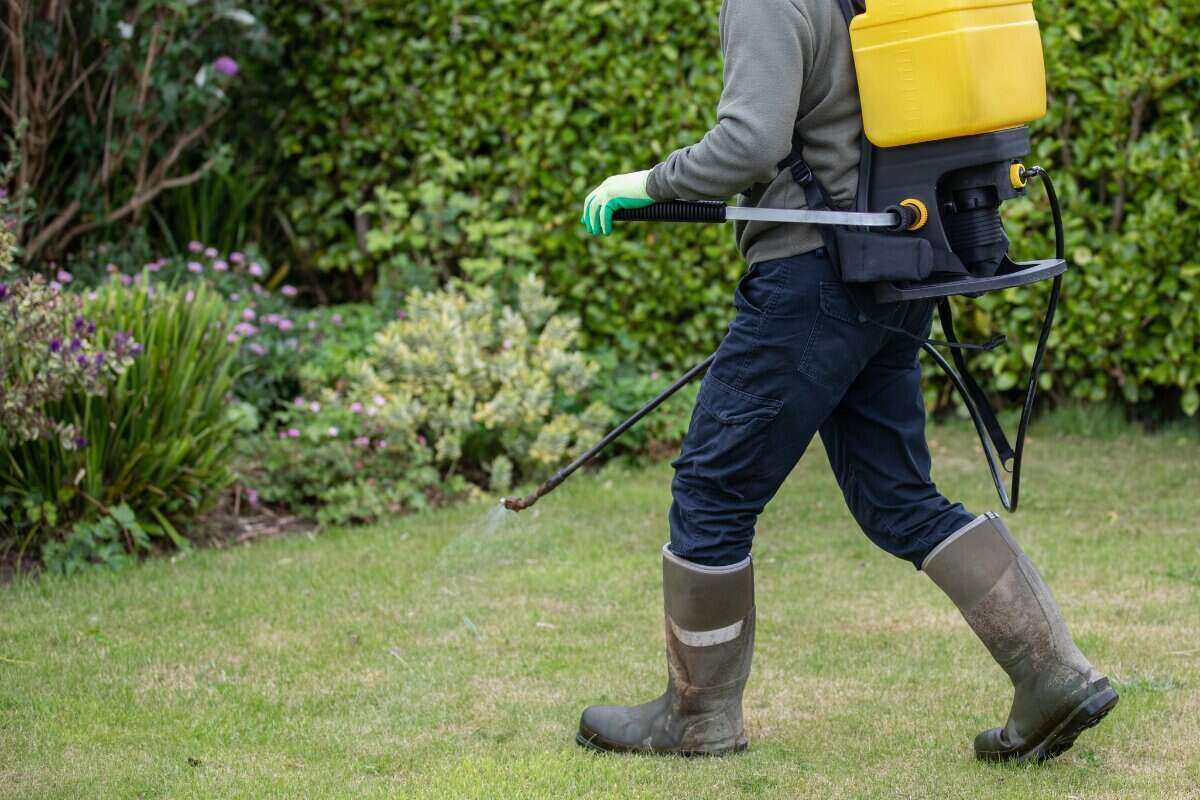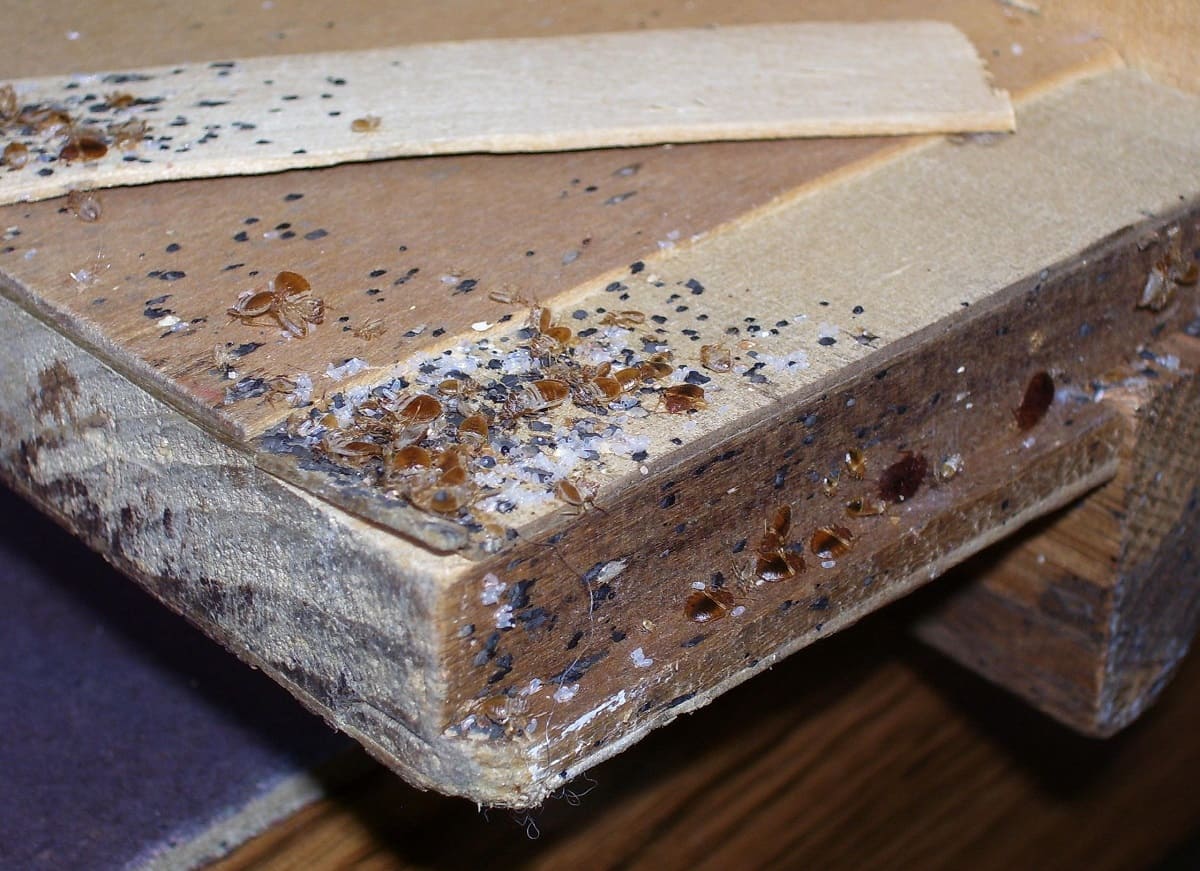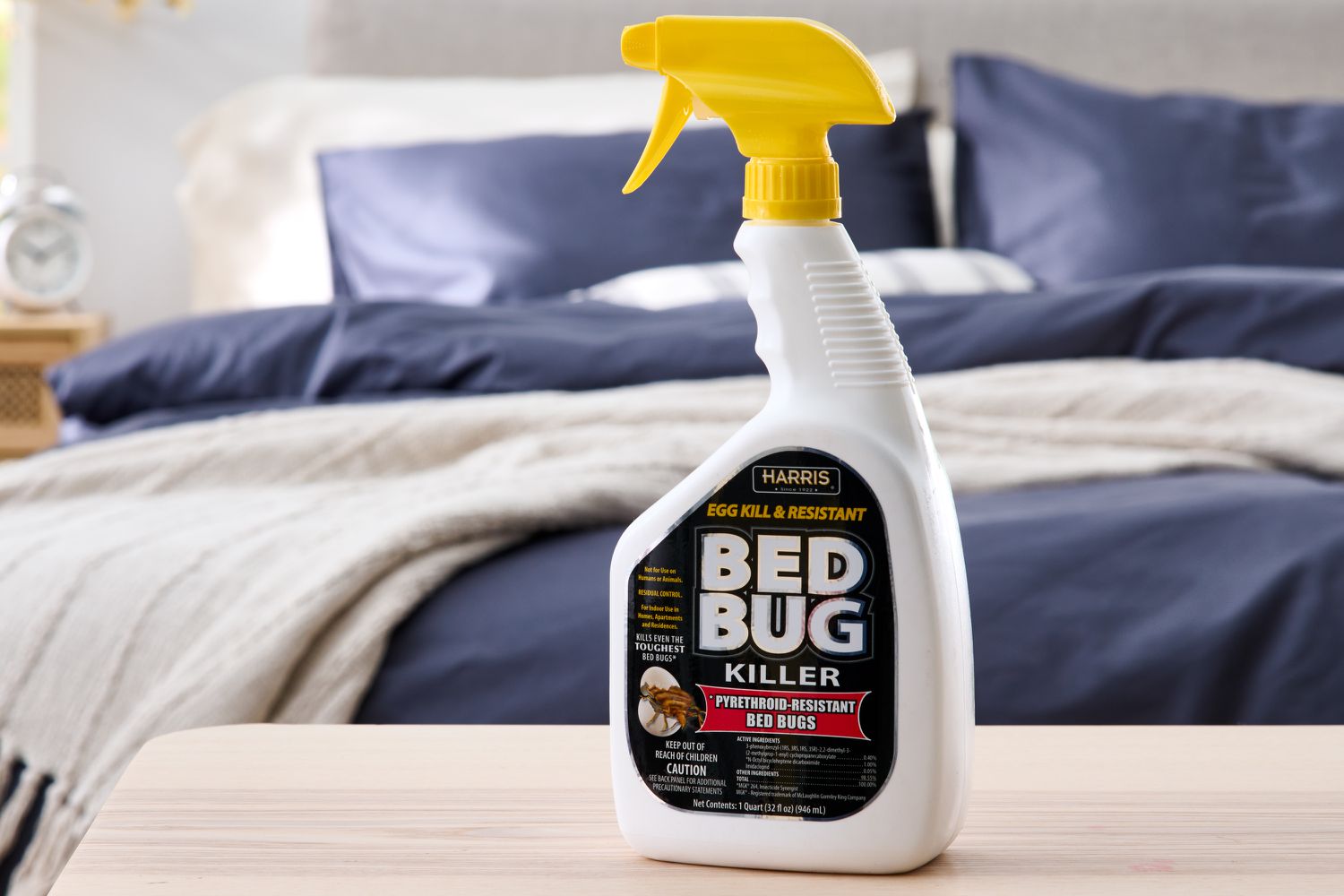Home>Furniture>Bedroom Furniture>What Kills Bed Bugs Permanently
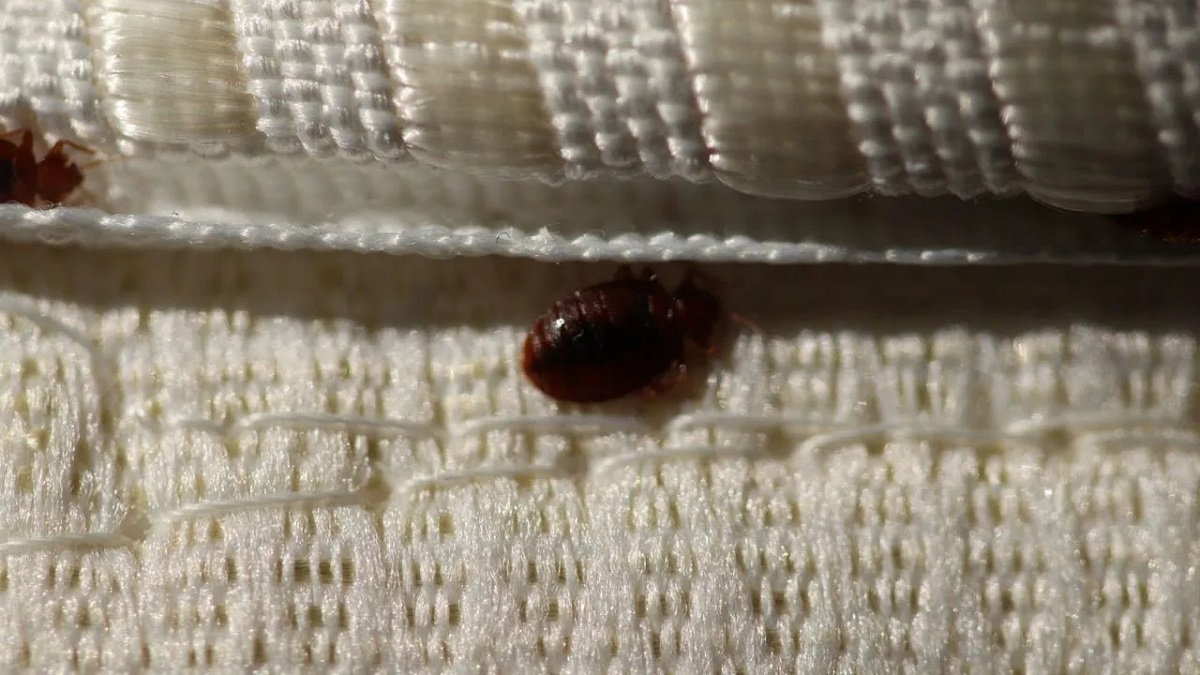

Bedroom Furniture
What Kills Bed Bugs Permanently
Modified: February 25, 2024
Looking for a permanent solution to kill bed bugs? Find the best bedroom furniture options to eliminate these pests and enjoy a peaceful sleep.
(Many of the links in this article redirect to a specific reviewed product. Your purchase of these products through affiliate links helps to generate commission for Storables.com, at no extra cost. Learn more)
Introduction
Welcome to our comprehensive guide on how to kill bed bugs permanently. Bed bugs are pesky little creatures that can infest your bedroom and cause serious discomfort. They are small, flat, and nocturnal insects that feed on the blood of humans and animals while they sleep. Their bites can result in red, itchy welts and can cause significant emotional distress.
It is crucial to eliminate bed bugs permanently to ensure a safe and healthy living environment. These resilient pests can quickly multiply and spread throughout your home if not dealt with promptly and effectively. In this article, we will explore various methods and strategies for getting rid of bed bugs once and for all.
Before we delve into the solutions, it’s important to understand the behavior and habits of bed bugs. By gaining insight into their life cycle and hiding places, we can develop a targeted approach to eliminate them.
Contrary to popular belief, bed bugs are not solely found in dirty or unkempt environments. These insects can infest even the cleanest homes, hotels, and dormitories. They are excellent hitchhikers and can easily latch onto luggage, clothing, or furniture, making it easy for them to travel from one location to another.
Bed bugs are experts at hiding, especially during the day when they are not actively feeding. They typically seek refuge in cracks and crevices around the bed, such as seams of mattresses, headboards, or baseboards. They can also hide in furniture, curtains, electrical outlets, and even behind picture frames.
In the next sections, we will debunk common myths about killing bed bugs and explore professional treatment options. We will discuss heat treatment, cold treatment, chemical treatment, natural remedies, and other effective strategies to eradicate these nuisance pests.
Remember, tackling a bed bug infestation requires patience, persistence, and a multi-faceted approach. Let’s dive into the methods that will help you get rid of bed bugs once and for all.
Key Takeaways:
- Effective bed bug control involves a multi-faceted approach, including professional treatments like heat and cold methods, natural remedies, and preventative measures. Vigilance, early detection, and proactive steps are crucial for successful bed bug management.
- Proper disposal of infested items, use of mattress encasements, and practicing caution while traveling or acquiring secondhand items are essential in preventing bed bug infestations. Combining knowledge, early detection, and a proactive approach is key to maintaining a bed bug-free living space.
Read more: What Temperature Kills Bed Bugs
Understanding Bed Bugs
Before we jump into the methods of eliminating bed bugs, it is crucial to understand the biology and behavior of these pesky insects. By gaining insight into their habits and life cycle, we can develop effective strategies to combat them.
Bed bugs, scientifically known as Cimex lectularius, are small, wingless insects that belong to the family Cimicidae. They are about the size of an apple seed and have flat, oval-shaped bodies. Bed bugs are nocturnal creatures that are usually active at night when their human hosts are sleeping.
These blood-feeding pests have a remarkable ability to adapt and survive in a variety of environments. They can be found in homes, hotels, dormitories, and even in public transportation. Bed bugs are excellent hitchhikers and can easily latch onto clothing, luggage, or furniture, allowing them to spread rapidly from place to place.
When it comes to feeding, bed bugs are attracted to the warmth and carbon dioxide emitted by humans and animals. They have the ability to detect their hosts from a distance and can move quickly to feed on their blood. However, contrary to popular belief, bed bugs are not solely attracted to unclean environments. They are attracted to their hosts, regardless of cleanliness or hygiene.
Bed bugs feed on their hosts by piercing the skin with their elongated mouthparts and extracting blood. Their bites often result in itchy, red welts, which can be a source of significant discomfort and irritation. However, not everyone reacts to bed bug bites, making it sometimes challenging to detect an infestation.
One of the reasons bed bugs are so difficult to eliminate is their ability to hide in hard-to-reach places. They prefer to remain close to their hosts and typically hide in cracks and crevices near the bed. Common hiding spots include mattress seams, headboards, baseboards, furniture, and even electrical outlets.
Another challenge posed by bed bugs is their ability to reproduce quickly. A female bed bug can lay hundreds of eggs in her lifetime, and these eggs can hatch in as little as ten days. This rapid reproduction cycle allows bed bug populations to grow exponentially if left untreated.
Now that we have a better understanding of bed bugs, including their behavior and biology, we can proceed to discuss effective methods for eliminating them. In the next sections, we will explore professional treatment options, as well as natural remedies and preventative measures to keep your home bed bug-free.
Why It’s Important to Eliminate Bed Bugs Permanently
When it comes to dealing with a bed bug infestation, there is no room for complacency. It is crucial to take immediate action and eliminate bed bugs permanently. Let’s explore why it’s so important to tackle this problem head-on.
1. Health Risks: While bed bugs are not known to transmit diseases, their bites can lead to various health issues. Bed bug bites can cause itching, redness, and swelling, which can lead to secondary infections if scratched excessively. Additionally, some individuals may experience allergic reactions to bed bug bites, further exacerbating the discomfort.
2. Sleep Disturbance: Bed bugs are nocturnal creatures that primarily feed at night when their human hosts are sleeping. As a result, their presence can lead to significant sleep disturbances. Constant itching and the fear of being bitten can lead to insomnia and sleep deprivation, negatively impacting overall health and well-being.
3. Psychological Effects: Dealing with a bed bug infestation can take a toll on your mental health. The fear and anxiety of bed bugs lurking in your home can cause stress and emotional distress. The mere thought of sharing your sleeping space with these pests can lead to feelings of paranoia and discomfort.
4. Infestation Spreading: Bed bugs have a remarkable ability to reproduce quickly and spread rapidly. A single female bed bug can lay hundreds of eggs, which can hatch in a matter of days. If left untreated, the infestation can quickly spread to other areas of your home, affecting not only your bedroom but also your living room, closets, and even your car.
5. Costly Extermination: Delaying or half-heartedly addressing a bed bug infestation can have financial implications. Bed bug extermination can be expensive, with costs varying depending on the severity of the infestation and the treatment method used. By tackling the problem promptly and effectively, you can minimize the potential financial burden associated with extermination.
6. Social Stigma: The presence of bed bugs in your home can lead to social stigma and embarrassment. There is often a misconception that bed bugs are a sign of uncleanliness, but in reality, they can infest even the cleanest of spaces. However, the perception of having bed bugs can affect your relationships, social life, and even your professional reputation.
7. Peace of Mind: Perhaps the most compelling reason is the peace of mind that comes with knowing your home is free from bed bugs. Being able to sleep soundly, without fear of being bitten, and not worrying about the negative impact on your health and well-being is invaluable.
It is clear that eliminating bed bugs permanently is essential to protect your health, well-being, and the overall comfort of your home. In the following sections, we will explore various methods and strategies to effectively get rid of bed bugs, ensuring a safe and pest-free living environment.
Common Myths About Killing Bed Bugs
When it comes to dealing with a bed bug infestation, there are numerous myths and misconceptions that can cloud our judgment and hinder effective treatment. Let’s debunk some of the most common myths about killing bed bugs.
Myth 1: Bed bugs are only found in dirty or unsanitary environments.
Fact: Bed bugs can infest any environment, regardless of cleanliness. They are attracted to their hosts, primarily seeking a blood meal, rather than being attracted to dirt or unsanitary conditions. Bed bugs can be found in both clean and cluttered spaces.
Myth 2: Bed bugs are too small to see with the naked eye.
Fact: While bed bugs are indeed small, ranging in size from 1 to 5 millimeters, they are visible to the naked eye. Adult bed bugs are about the size of an apple seed, and their nymphs (juveniles) can be even smaller. With a careful inspection, you can spot bed bugs or their signs, such as fecal stains or shed skins.
Myth 3: Bed bugs only infest mattresses.
Fact: While bed bugs do tend to hide in and around mattresses, they can also be found in various other locations. These include cracks and crevices of bed frames, headboards, baseboards, furniture, electrical outlets, and even behind wallpaper or picture frames. It is essential to conduct a thorough inspection of your entire living space when dealing with a bed bug infestation.
Myth 4: Bed bugs only come out at night.
Fact: While bed bugs are primarily nocturnal insects, they can adapt their feeding patterns and come out during the day if they are hungry. If you have a severe infestation or if their hiding places are disturbed, they may be more active during daylight hours.
Myth 5: Over-the-counter sprays can effectively eliminate bed bugs.
Fact: While there are various bed bug sprays available on the market, most of them are not sufficient to eliminate a bed bug infestation. Bed bugs have developed resistance to many chemical pesticides, and over-the-counter sprays often do not reach the hidden areas where bed bugs reside. Professional treatment methods are generally more effective in eradicating bed bugs.
Myth 6: Bed bugs are not a serious problem.
Fact: Bed bugs may not transmit diseases, but they can cause significant physical and emotional distress. Their bites can lead to itching, swelling, and allergic reactions in some individuals. The psychological impact of living with a bed bug infestation can also be substantial, causing stress, anxiety, and sleep disturbances.
By debunking these common myths, we can approach the task of killing bed bugs with a clearer understanding. In the next sections, we will explore both professional and natural treatment options to effectively and permanently get rid of bed bugs.
Professional Treatment Options
When dealing with a bed bug infestation, seeking professional help is often the most effective way to ensure complete eradication. Professional pest control companies have the expertise, experience, and specialized tools necessary to tackle even severe bed bug infestations. Let’s explore some of the main professional treatment options available.
1. Heat Treatment: Heat treatment is one of the most effective methods to kill bed bugs. Professional exterminators use specialized heaters to raise the temperature of the infested area to levels that are lethal to bed bugs, typically above 120 degrees Fahrenheit. This treatment penetrates the cracks and crevices where bed bugs hide, ensuring complete elimination.
2. Chemical Treatment: Professional pest control companies may use insecticides to treat bed bug infestations. These chemical treatments are carefully applied to specific areas where bed bugs are present, including cracks, crevices, and other hiding spots. It is important to hire licensed professionals who are trained in the safe and effective use of these chemical treatments.
3. Steam Treatment: Steam treatment is another effective method used by professionals to kill bed bugs. High-temperature steam is applied to infested areas, effectively killing bed bugs and their eggs. This treatment is particularly beneficial for treating mattresses, upholstery, and furniture, as it can penetrate deep into the fabric to target hidden bed bugs.
4. Cold Treatment: While less commonly used, cold treatment can be an effective option for eliminating bed bugs. This method involves exposing infested items to freezing temperatures for a prolonged period. Professional pest control companies may use special freezing equipment to achieve the desired temperatures, effectively killing the bed bugs and their eggs.
5. Fumigation: In severe bed bug infestations, fumigation may be necessary. However, this method is typically used as a last resort due to its disruptive nature. Fumigation involves sealing the infested area and introducing a gaseous pesticide to eliminate bed bugs. It is a complex procedure that should only be performed by licensed professionals.
It is crucial to hire a reputable and experienced pest control company to ensure effective treatment and long-term elimination of bed bugs. Professional exterminators will conduct a thorough inspection, develop a customized treatment plan, and provide ongoing monitoring to ensure the complete eradication of bed bugs in your home.
While professional treatment options are highly effective, they can be costly. It is important to weigh the benefits against the cost and consider the severity of the infestation before making a decision. In the next sections, we will explore natural remedies and preventative measures that can complement professional treatments and help prevent future bed bug infestations.
Read more: What Kills Bed Bugs And Their Eggs
Heat Treatment: An Effective Solution
When it comes to eliminating bed bugs, heat treatment is widely regarded as one of the most effective methods. This non-toxic and environmentally friendly approach involves exposing the infested area to high temperatures, effectively killing bed bugs at all stages of their life cycle, including eggs, nymphs, and adults.
During a heat treatment, professional exterminators use specialized equipment to raise the temperature of the infested space to levels that are lethal to bed bugs. This is typically done by using large heaters and fans to circulate hot air throughout the area. The temperature is carefully monitored and maintained above 120 degrees Fahrenheit, as bed bugs cannot survive at these high temperatures.
There are several advantages to using heat treatment as a bed bug eradication method:
1. Comprehensive Elimination: Heat treatment can penetrate deep into cracks and crevices where bed bugs hide, ensuring that all infested areas are exposed to lethal temperatures. This makes it highly effective at eliminating bed bugs, even in hard-to-reach areas.
2. Non-Toxic: Unlike chemical treatments, heat treatment does not involve the use of pesticides or harmful chemicals. This makes it a safe option for individuals who are sensitive to chemicals or have concerns about the potential health risks associated with pesticide exposure.
3. Immediate Results: Heat treatment provides immediate results. Once the treatment is completed, you can re-enter the space right away. This means you can quickly return to your normal routine without the need for extended evacuation or waiting periods.
4. Minimal Preparation: Heat treatment requires minimal preparation compared to other treatment methods. While certain items may need to be removed or protected, such as candles, aerosol cans, or highly flammable materials, there is no need to bag or wash clothing and linens, as is typically required with chemical treatments.
5. Effective against Resistant Bed Bugs: Bed bugs have developed resistance to many chemical pesticides, making them less effective in some cases. Heat treatment, however, is not affected by resistance and can still effectively eliminate even pesticide-resistant bed bugs.
It’s important to note that heat treatment should only be carried out by trained professionals. They will conduct a thorough inspection, identify the extent of the infestation, and determine the appropriate treatment plan. They will also take necessary precautions to protect your belongings and ensure the safety of everyone involved.
Heat treatment is a proven method for eliminating bed bugs, offering comprehensive eradication and peace of mind. However, it is often most effective when combined with other strategies, such as steam cleaning, vacuuming, and proper mattress encasements. In the following sections, we will explore additional treatment options and preventative measures that can complement heat treatment for long-term bed bug control.
Cold Treatment: Freezing Bed Bugs
Another effective method for killing bed bugs is cold treatment, which involves exposing the infested items or areas to freezing temperatures. Bed bugs are sensitive to extreme cold, and prolonged exposure to sub-zero temperatures can be lethal to them, including their eggs, nymphs, and adult bugs.
Cold treatment generally involves lowering the temperature of the infested items or the entire living space to at least -17 degrees Celsius (-0.4 degrees Fahrenheit) or lower, which is the temperature at which bed bugs freeze and die. There are a few different methods for implementing cold treatment to kill bed bugs:
1. Freezing Infested Items: One approach is to freeze smaller infested items that can be easily moved, such as clothing, bedding, or stuffed animals. Place the items in sealed plastic bags and leave them in a freezer set to the lowest temperature for at least 4 days. This ensures that the freezing temperatures penetrate the items and kill the bed bugs and their eggs.
2. Cryonite Treatment: Cryonite is a specialized freezing treatment that uses carbon dioxide (CO2) in the form of dry ice to freeze and kill bed bugs. The treatment involves directing the CO2 snow or pellets at the infested areas. When the CO2 comes into contact with the bed bugs, it rapidly freezes them, leading to their death.
3. Cold Rooms or Chambers: For larger infestations or when treating an entire room, cold rooms or chambers can be used. These specially designed rooms or enclosures have controlled cooling systems that maintain temperatures below freezing. The items or the entire room infested with bed bugs are placed inside the cold room, ensuring that the freezing temperatures reach all infested areas.
Cold treatment offers several benefits when it comes to bed bug control:
1. Non-Toxic: Cold treatment does not involve the use of any chemicals or pesticides, making it a safe option for both humans and pets. It provides a chemical-free alternative for eliminating bed bugs, addressing concerns about potential pesticide exposure or allergies.
2. Penetration into Cracks and Crevices: Freezing temperatures can penetrate cracks and crevices, reaching areas where bed bugs may hide. This ensures that all infested areas are exposed to the cold temperatures, increasing the effectiveness of the treatment.
3. Effective Against Different Life Stages: Cold treatment is effective against all life stages of bed bugs, including eggs. This is particularly important as eggs are more resistant to some chemical treatments, but they are vulnerable to extreme cold temperatures.
4. Convenient Treatment for Smaller Items: Freezing smaller infested items is a practical and accessible method for homeowners. It allows for targeted treatment of clothing, bedding, or small personal items that can be easily placed in a freezer.
While cold treatment can be effective in killing bed bugs, it may not be as practical for treating larger infestations or when the infestation is widespread throughout the entire living space. In such cases, it is advisable to consult a professional pest control company that specializes in bed bug management and has the necessary equipment and expertise to implement cold treatment effectively.
In the next sections, we will explore other treatment options, both chemical and natural, as well as preventative measures to help you combat and prevent bed bug infestations.
Chemical Treatment: Kill Bed Bugs with Pesticides
Chemical treatment is a common and effective method for eliminating bed bugs. It involves the use of pesticides specifically designed to target and kill bed bugs at all life stages. Chemical treatments can be applied to infested areas, cracks and crevices, and other hiding spots where bed bugs are known to reside.
When considering chemical treatment for bed bugs, it is essential to follow these guidelines:
1. Professional Pest Control: To ensure proper application and optimal results, it is recommended to hire a professional pest control company with experience in bed bug eradication. They have the knowledge, expertise, and access to commercial-grade insecticides that are more effective in eliminating bed bugs compared to over-the-counter products.
2. Inspection and Identification: Before applying any pesticides, it is important to conduct a thorough inspection to identify the extent of the infestation and pinpoint infested areas or harborages. This will help determine the appropriate treatment approach and targets.
3. Targeted Application: Chemical treatments should be applied selectively to infested areas, cracks, and crevices, avoiding indiscriminate spraying. Targeting specific areas where bed bugs hide or travel is crucial for achieving effective control and minimizing unnecessary pesticide exposure.
4. Follow Label Instructions: It is imperative to read and follow the label instructions provided with the pesticide product. This includes wearing protective clothing and equipment, ensuring proper ventilation, and adhering to the recommended application rates and guidelines.
5. Repeat Treatments: Depending on the severity of the infestation and the product used, multiple treatments may be necessary to fully eradicate bed bugs. This is because insecticides may not kill bed bug eggs, and subsequent treatments will be required to target newly hatched nymphs.
It’s important to note that over-reliance on chemical treatments alone can lead to pesticide resistance and is not a complete solution for long-term bed bug control. Using integrated pest management (IPM) strategies, which combine multiple approaches, is highly recommended for successful and sustainable bed bug management.
When using chemical treatments for bed bug control, it is also crucial to consider the following:
1. Health and Safety: Some pesticides used for bed bug control can have health risks if not used properly. Follow all safety precautions listed on the product label and consider consulting with a professional pest control company to ensure the safe and effective use of pesticide products.
2. Professional Expertise: In severe infestations or in situations where chemical resistance is suspected, it’s best to consult with a professional pest control company. They have access to a wider range of effective insecticides and can develop a customized treatment plan based on the specific circumstances.
3. Environmental Impact: Chemical treatments can have a negative impact on the environment. It is essential to choose pesticides labeled for bed bug control and follow proper disposal methods for empty containers and unused pesticide products. Consider using pesticides with low environmental toxicity and opt for non-chemical control methods whenever possible.
Chemical treatments, when used responsibly and in conjunction with other pest management strategies, can effectively eliminate bed bugs. In the following sections, we will explore natural remedies and preventative measures to complement chemical treatments and prevent future bed bug infestations.
To permanently kill bed bugs, use a combination of methods such as heat treatment, vacuuming, and insecticide application. It’s important to be thorough and persistent in treating all infested areas.
Natural Remedies to Get Rid of Bed Bugs
For those seeking alternative solutions or looking to minimize the use of chemical treatments, there are several natural remedies that can help in the battle against bed bugs. While these remedies may not provide the same level of effectiveness as professional treatments, they can be used as part of an integrated approach or for early detection and prevention of infestations. Let’s explore some natural remedies to get rid of bed bugs:
1. Diatomaceous Earth (DE): DE is a naturally occurring substance made from the fossilized remains of diatoms, a type of algae. It is available in powder form and works by dehydrating and damaging the exoskeleton of bed bugs. Apply DE to areas where bed bugs are known to hide, such as cracks, crevices, and baseboards. Be sure to use food-grade DE, as the industrial-grade DE can be harmful if inhaled.
2. Tea Tree Oil: Tea tree oil has insecticidal properties and can effectively repel and kill bed bugs. Mix a few drops of tea tree oil with water in a spray bottle and spray it on infested areas, crevices, and bedding. Repeat the application regularly to achieve maximum effectiveness.
3. Lavender Oil: Bed bugs are known to dislike the scent of lavender. Use lavender essential oil by diluting a few drops in water and spraying it on bedding, furniture, and any areas suspected of harboring bed bugs. While this may help repel bed bugs, it may not eliminate them entirely.
4. Neem Oil: Neem oil is derived from the seeds of the neem tree and has insecticidal properties. It can disrupt the life cycle of bed bugs, inhibiting their reproduction. Mix neem oil with water and apply it to infested areas and hiding spots. Repeat the application regularly to ensure continuous effectiveness.
5. Steam Cleaning: Steam cleaning is an effective natural method for killing bed bugs and their eggs. Use a handheld steam cleaner to treat mattresses, upholstery, carpets, and other infested areas. The high heat from the steam will penetrate the surfaces, effectively killing bed bugs on contact.
6. Vacuuming: Regular vacuuming can help manage and reduce the number of bed bugs. Use a vacuum cleaner with a HEPA filter to thoroughly vacuum infested areas, including mattresses, furniture, cracks, and crevices. Be sure to dispose of the vacuum bag or empty the canister in a sealed plastic bag outside your home to prevent bed bugs from re-infesting.
It’s important to note that while natural remedies can be useful, they may not completely eradicate a bed bug infestation. They are best used as part of an integrated approach, combined with other methods such as thorough cleaning, decluttering, and monitoring for early detection.
If you have a severe or persistent bed bug infestation, it is advisable to seek professional help. Pest control professionals have access to more potent treatments and can ensure thorough elimination of bed bugs.
In the following sections, we will explore additional treatment options and preventative measures to help you combat and prevent bed bug infestations in your home.
Read more: What Chemicals Kill Bed Bugs
Steam Treatment: Bed Bug Control with Heat
Steam treatment is an effective and chemical-free method for controlling bed bugs. It utilizes the power of high temperatures to kill bed bugs in all life stages, including eggs, nymphs, and adult bugs. By using hot steam, you can target and eradicate bed bugs in various infested areas of your home.
Here are the key benefits of steam treatment for bed bug control:
1. Heat Kills Bed Bugs: Bed bugs cannot withstand high temperatures, making heat an effective method for eliminating them. When exposed to steam, bed bugs are killed by the heat, effectively disrupting their life cycle and preventing further infestation.
2. Chemical-Free Solution: Steam treatment is entirely chemical-free, making it a safe and non-toxic option for controlling bed bugs. This is particularly beneficial for individuals with sensitivities to pesticides or those who prefer eco-friendly pest control methods.
3. Penetration into Hiding Places: Steam can penetrate cracks, crevices, and porous surfaces, reaching areas where bed bugs hide. By directing the steam to infested areas such as mattress seams, furniture joints, baseboards, and carpets, you can effectively kill bed bugs and their eggs in their hidden harborage sites.
4. Immediate Results: Steam treatment provides immediate results. As soon as the hot steam comes into contact with the bed bugs, it causes thermal shock and kills them instantly. This can provide quick relief from bed bug infestations, especially in areas where their presence is causing discomfort.
When using steam for bed bug control, it is important to follow these guidelines:
1. Use a High-Quality Steamer: Choose a steamer specifically designed for pest control. Look for a steamer with a continuous flow of high-pressure steam and a temperature above 120 degrees Fahrenheit. This ensures that the steam is hot enough to effectively kill bed bugs.
2. Direct the Steam Carefully: Direct the steam nozzle at the infested areas, making sure to move slowly and cover the entire surface. Focus on areas such as mattress seams, furniture joints, cracks, and crevices where bed bugs are known to hide. Ensure that the steam reaches inside these hiding places to effectively eliminate the pests.
3. Be Thorough and Repeat Treatments: Repeat the steam treatment multiple times to ensure that all bed bugs and their eggs are eradicated. Bed bug eggs are more resilient and may require additional treatments. Ensure that you steam all infested areas thoroughly and cover multiple sessions to achieve the best results.
It’s important to note that while steam treatment can effectively kill bed bugs, it may not reach every hidden spot or eliminate an extensive infestation entirely. Combining steam treatment with other control methods, such as vacuuming, laundering bedding, and applying residual insecticides to infested areas, can enhance the effectiveness of bed bug eradication.
If you have a severe or persistent bed bug infestation, it’s advisable to consult with a professional pest control company. They have the expertise and equipment to conduct thorough steam treatments and implement integrated pest management strategies to ensure complete elimination of bed bugs.
In the following sections, we will explore additional treatment options and preventative measures to help you combat and prevent bed bug infestations in your home.
Vacuuming: A Simple yet Effective Approach
Vacuuming is a simple yet effective method for controlling and reducing bed bug populations in your home. By using a vacuum cleaner, you can physically remove bed bugs, their eggs, and other debris from infested areas, helping to eliminate and manage the infestation.
Here are the key benefits of vacuuming as a bed bug control method:
1. Physical Removal: Vacuuming allows you to physically remove bed bugs, nymphs, eggs, and other debris from infested areas. This helps reduce the number of bed bugs present in your home and disrupts their breeding cycle.
2. Versatility: Vacuuming can be performed on various surfaces, including mattresses, box springs, bed frames, furniture, carpets, curtains, and baseboards. This versatility makes it a useful method for targeting bed bugs and their hiding places throughout your living space.
3. Non-Chemical Method: Vacuuming is a non-toxic and chemical-free approach to bed bug control. It is a safe option for households with children, pets, or individuals who prefer to minimize chemical exposure.
4. Immediate Results: Vacuuming provides immediate results by physically removing bed bugs from your environment. This can help alleviate the discomfort and anxiety caused by their presence, especially when used in conjunction with other bed bug control methods.
When using vacuuming as a bed bug control method, it is important to follow these guidelines:
1. Use a High-Efficiency Particulate Air (HEPA) Filter: A vacuum cleaner equipped with a HEPA filter is highly recommended for bed bug control. HEPA filters are designed to capture tiny particles, including bed bugs, eggs, and allergens, preventing them from being released back into the air during vacuuming.
2. Thoroughly Vacuum Infested Areas: Pay close attention to infested areas and areas near the bed, where bed bugs are likely to hide. Vacuum the seams and folds of mattresses, box springs, and upholstered furniture. Also, vacuum along baseboards, cracks, and crevices where bed bugs may be present.
3. Empty and Dispose of the Vacuum Bag: After vacuuming, promptly empty the contents of the vacuum bag or canister into a sealed plastic bag. Place the bag in an outdoor trash container to prevent any surviving bed bugs from reinfesting your home. It is important to dispose of the bag carefully to avoid spreading the infestation.
4. Repeat the Process: Repeat the vacuuming process regularly, especially in the initial stages of bed bug control. This helps ensure that any newly hatched bed bugs or missed eggs are captured and removed, reducing the chances of reinfestation.
While vacuuming is an effective method for bed bug control, it may not eliminate all bed bugs or reach every hidden spot. Combining vacuuming with other integrated pest management strategies, such as steam treatment, laundering bedding, and applying residual insecticides to infested areas, can provide more comprehensive control.
If you have a severe or persistent bed bug infestation, consider consulting with a professional pest control company. They have the knowledge and expertise to devise a comprehensive treatment plan and may employ industrial-grade vacuuming equipment to provide more efficient bed bug removal.
In the following sections, we will explore additional treatment options and preventative measures to help you combat and prevent bed bug infestations in your home.
Mattress Encasements: Preventing Bed Bug Infestations
Mattress encasements are a valuable tool in preventing and controlling bed bug infestations. These protective covers act as a physical barrier, enclosing the mattress and depriving bed bugs of a hospitable environment to hide and breed. Mattress encasements offer several benefits in the fight against bed bugs:
1. Bed Bug Entrapment: A quality mattress encasement is specifically designed with micro-zipper technology to create a tight seal around the entire mattress. This prevents bed bugs from entering or escaping the encased mattress, trapping them inside and limiting their ability to infest your sleeping area.
2. Identification and Monitoring: By encasing your mattress, you create a clear, clean surface that allows easier detection of bed bug activity. If bed bugs are present, they will be visible on the outer surface of the encasement, alerting you to the problem. Regular monitoring can help identify early signs of infestation and prompt immediate action before the problem worsens.
3. Prevention of Infestations: Mattress encasements can serve as a proactive measure to prevent bed bug infestations. They act as a deterrent, making it more difficult for bed bugs to establish themselves in your mattress. This is particularly useful in situations where you may have been exposed to bed bugs, such as during travel or when living in multi-unit housing.
4. Ease of Cleaning: Mattress encasements are typically made from durable and waterproof materials that are easy to clean. You can easily remove the encasement and wash it in hot water to kill any bed bugs or eggs present. Regular cleaning of the encasement can help maintain a bed bug-free sleeping environment.
When selecting a mattress encasement, consider the following:
1. Quality and Durability: Choose a high-quality encasement made from a thick and durable material that is resistant to tears and punctures. Look for encasements that are specifically designed for bed bug protection and have been tested for effectiveness.
2. Zipper Design: Ensure that the encasement has a secure zipper closure with small teeth that prevent bed bugs from entering or escaping. Look for encasements that have micro-zippers or Velcro flaps to provide an extra layer of protection.
3. Size Compatibility: Measure your mattress dimensions carefully to ensure a proper fit. The encasement should completely cover the mattress and snugly secure it, leaving no gaps or vulnerabilities for bed bugs to enter or escape.
4. Breathability: Choose an encasement that is breathable to allow air circulation and maintain comfort while sleeping. Look for encasements made from materials that are both bed bug-proof and breathable, such as those designed with specialized fabrics or membrane technology.
Remember, mattress encasements are most effective when used in conjunction with other bed bug prevention measures, such as regular inspection, vacuuming, and practicing good hygiene. Additionally, consider encasing your box springs and pillows for added protection, as bed bugs can infest these areas as well.
It’s important to note that if you already have a bed bug infestation, simply encasing your mattress will not eliminate the problem. In such cases, professional treatment and other integrated pest management strategies should be employed to effectively eradicate the infestation.
In the following sections, we will explore additional treatment options and preventative measures to help you combat and prevent bed bug infestations in your home.
Proper Disposal of Infested Items
When dealing with a bed bug infestation, it is crucial to properly dispose of infested items to prevent the spread of these pests and minimize the risk of reinfestation. Certain items may be heavily infested with bed bugs or may be difficult to treat effectively, making disposal the safest and most practical option. Here are some guidelines for the proper disposal of infested items:
1. Assess the Level of Infestation: Before deciding to dispose of an item, assess the level of infestation and the likelihood of successful treatment. If an item is heavily infested, has deep cracks or crevices that are difficult to treat, or is in poor condition, it is best to err on the side of caution and dispose of it.
2. Seal Infested Items Securely: To prevent bed bugs from escaping and infesting other areas, seal infested items securely in heavy-duty plastic bags. Double-bagging is recommended to provide an extra layer of protection. Use strong tape to seal the bags tightly, ensuring there are no gaps or openings.
3. Label the Bags as Infested: Clearly label the sealed bags as “Infested with Bed Bugs” to alert others to the potential risk. This helps prevent others from accidentally coming into contact with the infested items and potentially spreading bed bugs to unaffected areas.
4. Disposal Options: Depending on local regulations and guidelines, you have several options for disposing of infested items:
- Curbside Trash Collection: Check with your local waste management authorities to determine if you can include sealed bags of infested items in regular curbside trash collection. Some areas may require you to follow specific guidelines or schedule a special pick-up.
- Designated Disposal Sites: In certain locations, there may be designated sites or facilities for the disposal of bed bug-infested items. Research local regulations or contact waste management authorities to inquire about any available disposal options.
- Freezing or Heat Treatment: If you have access to large freezers or specialized heat chambers, you may consider subjecting the sealed bags to freezing temperatures or high heat to kill the bed bugs before disposal. Consult with professionals or pest control experts for guidance on proper procedures.
- Professional Help: If you are unsure or have concerns about proper disposal, consider consulting with a professional pest control company. They can provide guidance on the most appropriate disposal method based on local regulations and best practices.
5. Prevent Spreading the Infestation: It is crucial to handle sealed bags of infested items carefully to prevent accidentally spreading the infestation. Avoid dragging or tearing the bags, and always transport them directly to the designated disposal location without allowing them to come into contact with other surfaces or people.
Remember, proper disposal of infested items should be done in conjunction with comprehensive treatment measures targeting the entire infestation. Identifying and treating the source of bed bugs and implementing integrated pest management strategies are essential for effectively eliminating these pests and preventing further infestations.
In the following sections, we will explore additional treatment options, preventative measures, and steps for maintaining a bed bug-free environment in your home.
Read more: How To Kill A Bed Bug
Preventative Measures to Avoid Bed Bug Infestations
Prevention is key when it comes to avoiding bed bug infestations. Taking proactive measures can help safeguard your home and prevent these unwanted pests from entering and establishing themselves in your living space. Here are some preventative measures to consider:
1. Practice Vigilance while Traveling: Bed bugs are excellent hitchhikers and can easily be transported into your home through luggage, clothing, or other personal belongings. When traveling, inspect hotel rooms for signs of bed bugs, such as dark spots on the mattress, furniture, or baseboards. Keep your luggage elevated and away from bed bugs’ common hiding places.
2. Examine Secondhand Furniture: Before bringing secondhand furniture, mattresses, or other items into your home, carefully inspect them for signs of bed bugs. Check for live bugs, shed skins, or small dark spots. If possible, consider treating secondhand items before bringing them indoors.
3. Maintain Cleanliness and Declutter: Regularly clean and vacuum your home to reduce potential hiding spots for bed bugs. Pay special attention to cracks, crevices, and areas near the bed. Declutter your living space to minimize the number of potential harborage sites for bed bugs. Keep your bedrooms and living areas tidy and organized.
4. Encase Mattresses and Box Springs: Use high-quality mattress and box spring encasements to protect against bed bug infestations. These covers create a barrier that prevents bed bugs from hiding in or accessing these areas, making it easier to detect and treat any potential infestations.
5. Be Cautious with Secondhand Clothing: When purchasing or receiving secondhand clothing, inspect them thoroughly before bringing them into your home. Bed bugs can hide in seams, folds, or pockets of clothing, so ensure that they are clean and free from any signs of infestation.
6. Be Mindful of Shared Spaces: Be cautious when using shared laundry facilities, communal areas, or staying in shared accommodations. These spaces can be a source of bed bugs, so take necessary precautions to prevent them from hitching a ride back to your home. Consider using bags or sealed containers for laundry and regularly clean and inspect your belongings.
7. Create Physical Barriers: Use caulk or sealant to seal cracks and crevices around baseboards, electrical outlets, and other potential entry points. This helps prevent bed bugs from entering and establishing themselves in your home.
8. Educate Yourself: Learn about the signs of bed bug infestations, such as small blood stains on sheets, dark spots on mattresses, or the characteristic musty odor they emit. Early detection plays a crucial role in preventing infestations from spreading.
9. Consult Professionals: If you suspect or detect bed bugs in your home, seek professional help promptly. Experienced pest control professionals can provide thorough inspections, treatment options, and recommendations to effectively eliminate bed bugs and prevent future infestations.
By implementing these preventative measures and staying vigilant, you can significantly reduce the risk of bed bug infestations and maintain a comfortable and bed bug-free living environment.
In the following sections, we will explore additional treatment options, best practices for bed bug management, and steps for maintaining a bed bug-free environment in your home.
Conclusion
Dealing with a bed bug infestation can be a frustrating and disruptive experience, but with the right knowledge and proactive measures, you can successfully eliminate these pesky pests and prevent future infestations. Throughout this comprehensive guide, we’ve explored various treatment options and preventative measures to help you combat bed bugs effectively.
From understanding the behavior and habits of bed bugs to debunking common myths, we’ve covered the essentials of bed bug control. We’ve discussed professional treatment options such as heat treatment, cold treatment, chemical treatment, and steam treatment, highlighting their effectiveness in eradicating bed bugs.
Additionally, we explored natural remedies, such as diatomaceous earth, tea tree oil, lavender oil, and neem oil, which can be used as part of an integrated approach to control bed bugs. We emphasized the importance of vacuuming and using mattress encasements as simple yet effective methods to manage bed bug populations.
Equally vital are preventative measures to avoid bed bug infestations. We emphasized the significance of practicing vigilance while traveling, carefully inspecting secondhand furniture and clothing, maintaining cleanliness and decluttering, encasing mattresses and box springs, being cautious in shared spaces, creating physical barriers, and educating oneself about the signs of infestations.
In conclusion, a combination of knowledge, early detection, and a multi-faceted approach is key to successful bed bug control. It is crucial to consult professional pest control experts, especially in severe or persistent infestations, to ensure thorough treatment and prevention of reinfestation.
Remember, preventing bed bug infestations is the best defense. By implementing preventive measures, staying vigilant, and addressing any signs of bed bugs promptly, you can maintain a bed bug-free environment in your home. Regular maintenance and proper hygiene practices will help ensure the comfort and peace of mind you deserve.
Be proactive, informed, and persistent in your battle against bed bugs, and you can achieve a bed bug-free living space. Don’t let these tiny nuisances disrupt your life – take action and reclaim your home.
Frequently Asked Questions about What Kills Bed Bugs Permanently
Was this page helpful?
At Storables.com, we guarantee accurate and reliable information. Our content, validated by Expert Board Contributors, is crafted following stringent Editorial Policies. We're committed to providing you with well-researched, expert-backed insights for all your informational needs.

